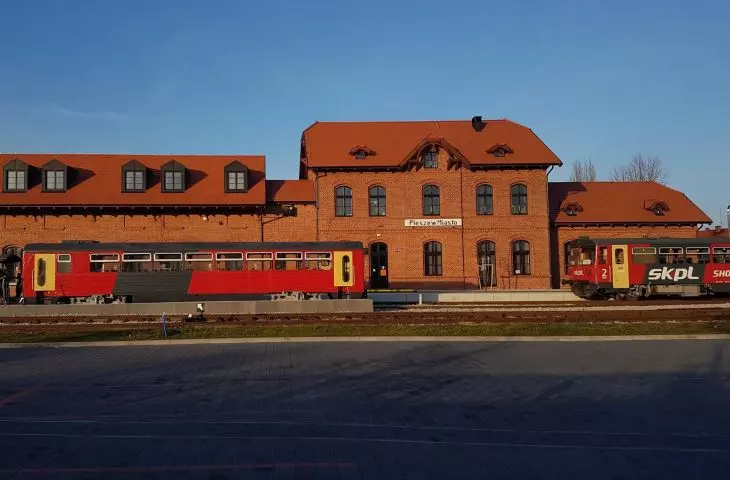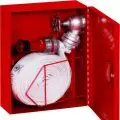Some talk and some act. The idea of a fifteen-minute city is being put into practice by the authorities of the Wielkopolska city of Pleszew. Positive changes have been going on there for several years. Important factors include accessibility, greenery, traffic calming, culture, innovative stimulation of construction and integration of the city with the municipality. Recently, the city has been using a new slogan: "Compact Pleszew."
Dr. Arkadiusz Ptak, mayor of the city and commune of Pleszew, talks about how the changes are taking place and plans for the future in an interview with "A&B"
Jakub Głaz: New trees, bicycle paths, cultural facilities, traffic calming, pocket parks, the launch of municipal transportation. In recent years, Pleszew has been undergoing changes that are more typical of larger centers. Since this year you have also been promoting the idea of a compact city. You've even produced a video showing residents how to get many important things done in 15 minutes on foot, by bicycle and by public transportation.
Arkadiusz Ptak: This is our long-term idea for the city. After analysis, we came to the conclusion that the distinguishing feature of Pleszew is its compactness - the ability to get to any place in fifteen minutes, especially to public institutions, green areas, health care facilities, schools, kindergartens or, finally, cultural units. Such opportunities are lacking in many medium-sized and larger cities.
JG: Quite a few centers, following the example of Paris, are therefore beginning to transform themselves in the spirit of the "quarter-hour city."
AP: Meanwhile, Pleszew does not have to do much to achieve this. What is important is that it uses its potential and existing resources. For example, we have a well-developed network of schools and nurseries and kindergartens. There are no shifts in them, but there are school day care centers for those in need. We are also now connecting the city with a network of roads and bicycle lanes. In April, we launched two minibus lines of public transportation connecting important points in Pleschev. The number of passengers is steadily increasing.
Pleszew local railroad station. Library and "Culture Depot"
Photo: Jakub Głaz
JG: There is also a regular operation of the country's only urban narrow-gauge railroad operated by SKPL between the station of the "normal" railroad in neighboring Kowalewo and the center of Pleszew.
AP: We treat it both as part of the municipality's subsidized public transportation and as a tourist attraction. In the coming years, we also plan to start a narrow-gauge railroad museum in the smaller station building in Kowalewo.
JG: "We did", "we connect". We, meaning who?
AP: The team I work with in the City Hall, organizational units, municipal companies, but also the scientific community, with whom we have ongoing cooperation and exchange experiences. Over the past year, I have presented the concept of Pleszew as a compact city at several scientific seminars. It is also cooperation with NGOs, informal groups. Support is provided by councilors, village heads and presidents of settlements. We manage to have a very substantive discussion about the problems of Plesetsk on the city council. This gives comfort in decision-making.
JG: What is the participation of residents? Some of the positive changes that are taking place in Pleszew are protested in other cities.New trees in the streets and bike paths mean the elimination of parking spaces and narrower roadways for cars. Meanwhile, despite the city's compact size, Pleshevians are very accustomed to getting around by car.
AP: Critical voices are therefore not lacking here either, including complaints about the need to clean up leaves and eliminate parking spaces. All the more so because we are planting trees in the center, along the streets and in the Market, which will reach a solid size. This is the result of analysis, but also of increasingly strong criticism that reached the office from some residents. There was talk of concretization, too few trees, and it was hard to disagree. And in order to convince the skeptics we conducted an educational campaign showing, among other things, the example of Barcelona, where mature, aged trees do not interfere with the functioning of the center , and bring many benefits.
JG: The community center and library located at the train station were built in the previous term. Are they also controversial?
AP: Almost none, although, of course, there will always be someone to whom the amount of 15 million zlotys spent on this purpose will seem too much. However, it should be remembered that two-thirds is an EU grant, and the importance of these two institutions is very high for the city and municipality. Therefore, in the field of culture, I dream of a permanent exhibition of the work of Pleszew-born Marian Bogusz, whose largest collection is located in our city. This is a broader project to create a contemporary art gallery in Pleszew. Meanwhile, we plan to build a hotel next to the library and community center.
The station of the local railroad in Pleszew. Library and "Culture Depot"
Photo: Jakub Głaz
JG: Does Pleszew need a hotel? Previously, there were plans for a residential development opposite the station.
AP: Our analysis shows that it does. It is to be a business hotel with a business incubator, a place for symposiums and conferences. On the other hand, we are also building apartments, only in other locations. We are also stimulating private investment in a way rarely practiced in the country. We are selling city land for development, but with an option to buy it back after three years if the investment is not realized. We don't want valuable land to become just a capital investment and an object of speculation.
JG: In what mode do you select projects for municipal housing and cultural institutions?
AP: So far it has been limited tenders, with the designer presenting several design options at the concept stage.
JG: However, competitions seem to be the best way.
AP: And we're moving towards one. Together with the Society of Polish Urban Planners, we want to organize a competition for the development of Pleszew's inner city. We are currently working on a transportation study to determine how vehicular traffic can be reduced in this area. Once the organization of traffic is established, we will announce the competition. We are keen to strengthen the role of greenery and facilitate cafes and restaurants.
JG: Pleszew has quite a lot of green areas that could be combined in an interesting way. The former Evangelical cemetery with its mature trees has great potential. However, it is fenced off and inaccessible.
AP: We are slowly linking the green areas together with bike paths and pedestrian routes. This month we completed a new pocket park along the railroad tracks. We are revitalizing the most important park, the Planty. Meanwhile, the former cemetery that the city once bought from the Evangelical community has been decently inventoried, and the project to turn it into a park is almost complete. We plan there, of course, to commemorate the history of the place and the people buried there, including World War I soldiers. The problem for now is finances. Another problem, however, was recently provided to us by the Polish Waterways. We wanted to uncover the Ner River, which runs in a canal through a built-up area of the city. Unfortunately, Wody Polskie did not agree and - during a recent renovation the canal was reconstructed. We will arrange a bicycle path over it, but such a solution does not fully satisfy us.
JG: However, it's not water that is the city's biggest problem, but polluted air. The winter months are a challenge for anyone who wants to spend time outdoors in Pleszew.
AP: We are doing more and more to change that. In November, more air quality sensors - 30 units - will appear in the city. The Municipal Police will be able to intervene even more effectively in cases of burning garbage or low-grade fuel. We are the only municipality in Poland to have done a full inventory of stoves in all homes. We know who is heating and how. However, the replacement of stoves is hampered by the poor willingness of the gas company to connect new properties and buildings.
JG: You place great emphasis in Pleszew on integration with the municipality. By the way, you are involved in the development of such areas academically.
AP: We are in the fortunate situation that the city and the municipality complement each other. And, even if Pleszew has lost more than a thousand residents in the last two decades, the same number has replenished the municipality. Thus, we do not see the negative effects of suburbanization: we have not lost taxpayers, as is the case in large cities, whose residents drain to their neighbors. On a municipal scale, the most important challenge now is transportation cohesion. Later this term, we want to launch a third bus line serving places excluded by transportation or served only by school buses, which can also be used by adult residents. We also want to facilitate access to forest areas that revealed their potential during the pandemic. Few large cities have such areas within easy reach. And this is another distinguishing feature of compact Plesetsk, which we intend to put to good use.




















